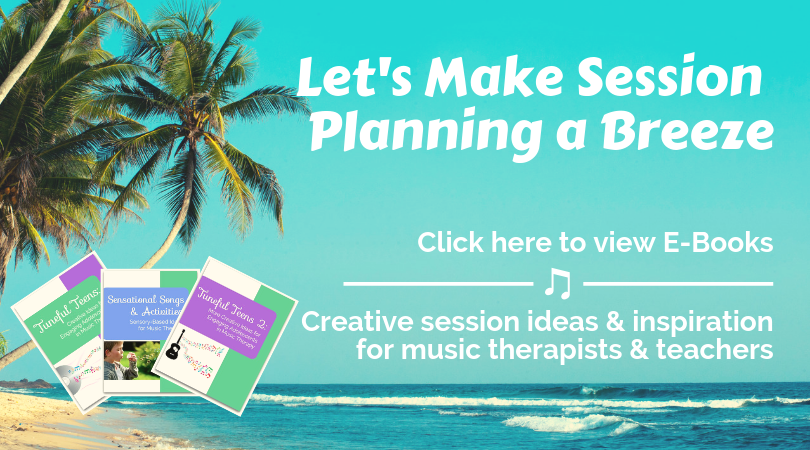
Wholesome Harmonies has grown in leaps and bounds since I started seeing my first private client way back in 2007.
I started as a solo practitioner providing solely individual music therapy services. From there, I expanded to group music therapy services, developmental music classes at local libraries and adapted music lessons.
Currently, about half of the services we provide (my eight therapists and I) are music therapy and half are adapted music lessons. I am constantly receiving calls from parents who tell me about how their child is musically inclined and wants to learn an instrument, but when they tried “traditional” music lessons, it did not go well.
I always tell parents that what we offer is anything but traditional.
We incorporate a variety of creative adaptations to ensure that each student is successful, regardless of their level. Some examples include: musical games, music and movement experiences (we don’t expect our students to sit at the piano for half an hour straight) and songwriting. I also always include the student’s favorite songs as lesson material to supplement their lesson book (wouldn’t you be more inclined to practice a Bruno Mars song?)
But there is one thing I recently started incorporating into every adapted lesson and it has been a game changer.
That one thing is improvisation.
Improvisation can sound kind of scary, am I right? But what I mean is just free time for the student to explore the instrument.
On keyboard I might give some directives, such as “only play on the black keys” or “just play the note C in any octave.” I might ask if they’d like to play with an auto accompaniment beat (they come in a variety of styles!) Or, I might not give any directives at all and just let them explore the keyboard.
I have heard some amazing music when fingertips hit the keys during improv time.
I have a student who does not use words to communicate, and when he starts playing I feel as if he’s communicating with me through the music. It’s hard to explain it in words, but if you work with students who have special learning needs I highly encourage you to try this out.
Improv time can be placed at the beginning of the lesson as a warm up, in the middle of the lesson as a “break,” or at the end of the lesson to wrap up and bring together the concepts we’ve worked on during that lesson.
If you already incorporate improv time into your lessons, I’d love to hear how your students respond. Leave a comment below to let us know! Learning from each other is how we grow as teachers and therapists.



Leave A Comment